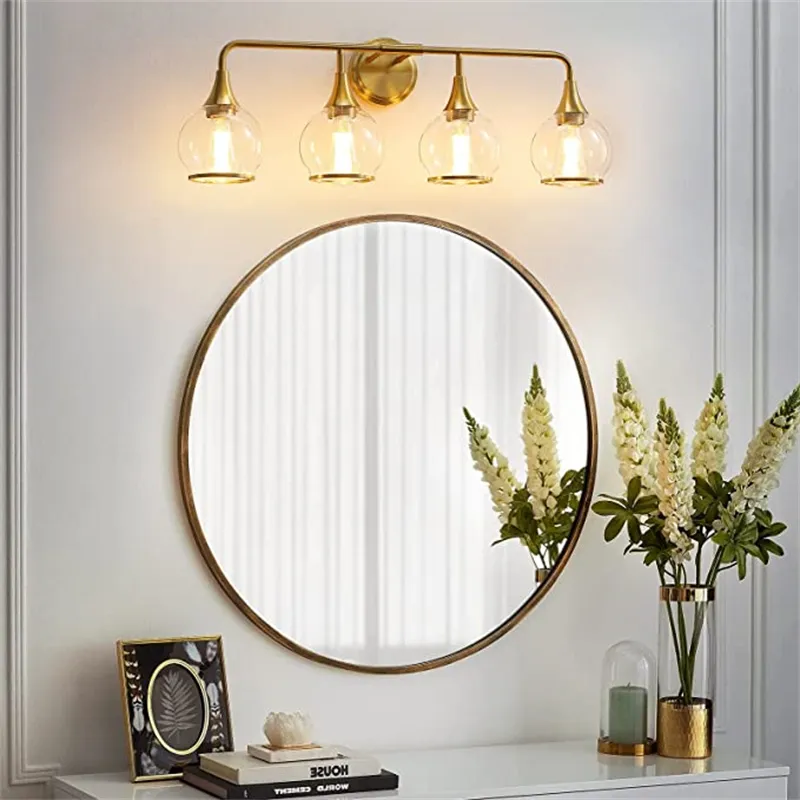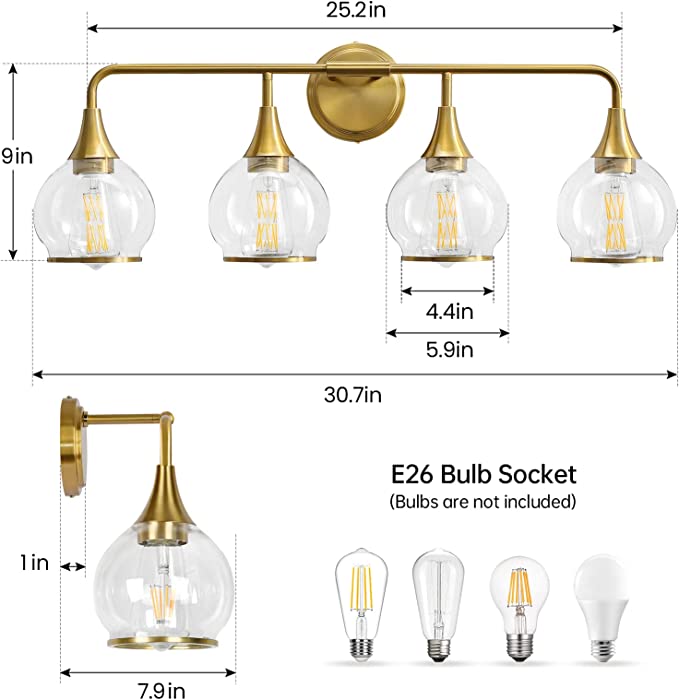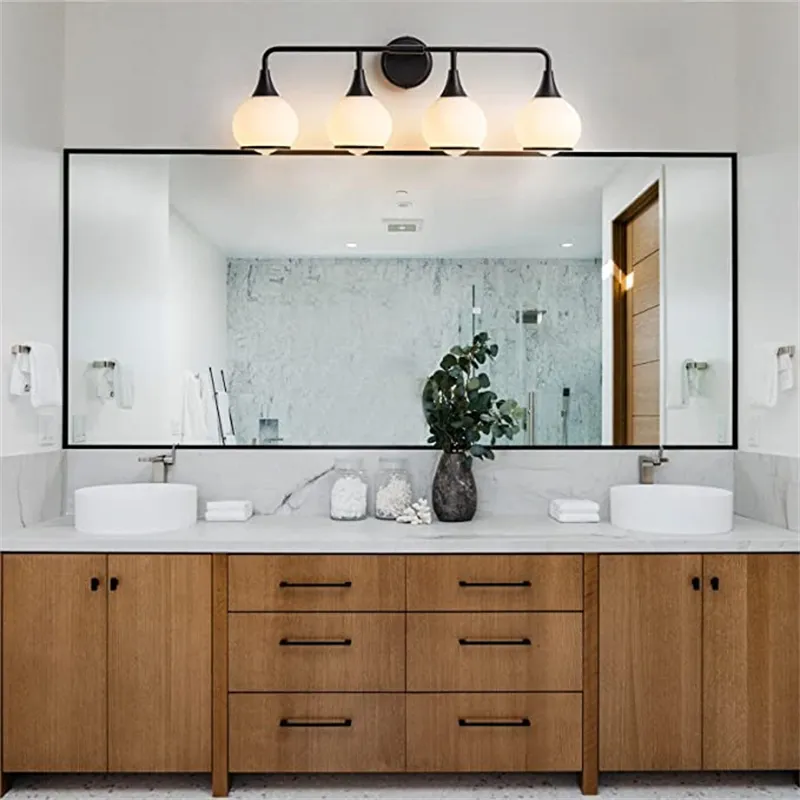What Are the Lights on a Vanity Called? — Vanity Wall Lights
In the design and layout of a home, the dressing table often plays a crucial role in people's daily lives. Whether it's getting ready in the morning or removing makeup and applying skincare at night, the dressing table has become an integral part of our daily routine.
Many people often ask: What exactly is the light on a dressing table called? In the professional lighting and home design fields, this type of lamp installed near a dressing table to provide soft, precise light has a specific name: vanity wall light.
This name isn't just a random one; it stems from long-established standards in lighting, interior design, and architectural decoration. This article will comprehensively explain the concept of "vanity wall light" from multiple perspectives, helping readers understand its name, functional positioning, installation requirements, light source characteristics, material design, and its role in the overall home environment.

What is the light on a dressing table called?
The origin of the name vanity wall light:
The question "What are the lights on a dressing table called?" is representative because many people lack a systematic understanding of the classification of common lighting fixtures in daily life.
In professional lighting terminology, "vanity" refers to the dressing area, often closely associated with personal grooming, makeup, and skincare. "Wall light" describes its installation method—a fixture mounted on the wall. Therefore, the combined "vanity wall light" directly describes a lighting fixture installed on the wall of the dressing area.
In contrast, table lamps, pendant lights, and ceiling lights all have different installation locations and functional characteristics. The term "vanity wall light" clearly defines its functional connection to the dressing table.

What is the functional positioning of a vanity wall light?
Why does a dressing table need a separate wall light? This is closely related to the dressing table's intended use.
1. Precise Illumination
The core function of a vanity wall light is to provide clear, even illumination of the face, helping to avoid shadows while applying makeup, contouring, and skincare. Compared to ordinary ceiling lights, wall lights offer a closer illumination angle to the face, reducing the problem of "face shadows" caused by light sources positioned too high.
2. Creating Ambiance
A vanity wall light is more than just a practical tool; it also plays an aesthetic role in interior design. Its warm, soft illumination can create a private and comfortable atmosphere, transforming the dressing area into a separate, smaller space.
3. Auxiliary Lighting
In an overall home lighting system, a vanity wall light often serves as a focal point. Unlike a main light, it doesn't need to cover the entire room; instead, it focuses on providing a subtle, supplemental light source.

Where is a vanity wall light installed?
The mounting method is one of the key criteria for distinguishing lamp types. Vanity wall lights typically have the following installation features:
1. Mounted above or on the walls on either side of the dressing table
Unlike pendant lights, vanity wall lights are typically not hung directly overhead. Instead, they are mounted on the left and right sides, or directly above the dressing table, depending on the location of the mirror. This arrangement ensures even distribution of light on the face.
2. Appropriate Height
The installation height of a vanity wall light is generally based on the center of the user's face, typically between 1.5 and 1.7 meters from the ground. This height ensures that the light shines directly on the face, rather than casting shadows from an angle.
3. Mounting Method
Vanity wall lights are typically wall-mounted, secured to the wall with a metal base or bracket. This provides stability and aesthetics while minimizing countertop space.
What are the characteristics of a vanity wall light source?
The choice of light source is crucial to ensuring the effectiveness of a vanity wall light.
1. Color Temperature Requirements
The most commonly used color temperature range for vanity wall lights is 2700K to 4000K. Excessively cool light can easily distort skin tones, while excessively warm light can affect detail. A neutral to warm light source best simulates the effect of natural daylight.
2. Color Rendering Index (CRI)
In lighting design standards, a light source with a color rendering index (CRI) above 90 is considered reliable for faithfully reflecting the colors of skin and cosmetics. Therefore, a high color rendering index is a must-have for vanity wall lights.
3. Brightness Control
A vanity wall light needs to provide both the brightness needed for applying makeup and the softness and comfort needed for resting. Some models feature a dimming function, allowing you to adjust the light intensity to suit your needs.
Vanity Wall Light: What Materials and Designs Are Available?
Beyond functionality, the material and design of a vanity wall light are also important components of a home's aesthetics.
1. Material Selection
• Glass Shade: Provides uniform light transmission, often seen in modern minimalist styles;
• Metal Bracket: Sturdy and durable, often made of copper, iron, and stainless steel;
• Fabric Shade: Provides soft light, more suitable for a cozy bedroom dressing table.
2. Design
• The design of a vanity wall light is often centered around symmetry, especially when mounted on either side of a mirror. A symmetrical arrangement enhances visual balance and avoids uneven light distribution.
3. Style Compatibility
• From European retro to Nordic minimalism, from modern luxury to Chinese classics, vanity wall lights complement nearly every home style, and their appearance often blends seamlessly with the overall decor of the room.
The Role of Vanity Wall Lights in Home Lighting Systems
In interior lighting design, lighting is generally categorized into three categories: general lighting, focal lighting, and decorative lighting. Vanity wall lights are a prime example of focal lighting.
1. Relationship with General Lighting
General lighting is often provided by ceiling lights or recessed ceiling fixtures, providing overall ambient light. Vanity wall lights, on the other hand, complement these by focusing on specific areas.
2. Relationship with Decorative Lighting
While vanity wall lights primarily provide functional lighting, their unique design and shape often serve a decorative purpose, adding depth to a space.
3. Differences from Other Wall Lights
While bedroom and hallway wall lights primarily provide ambient lighting, vanity wall lights offer greater practicality and functionality. They must not only be aesthetically pleasing but also meet precise lighting needs.

Combining vanity wall lights with ergonomics
The design of a vanity wall light is not only about aesthetics but also about ergonomics.
• Light uniformity: Uniform facial illumination is the core of vanity wall light design. Ergonomics emphasize avoiding harsh shadows and ensuring symmetrical lighting on both sides.
• Glare control: Appropriate lampshade design and light source angle can reduce glare directly into the eyes, thereby improving user comfort.
• Operational convenience: Many vanity wall lights feature independent switches or touch controls for easy adjustment in different operating scenarios.
Why is it called a "vanity wall light"?
To summarize, when people ask, "What is a vanity wall light called?" the professional answer is—a vanity wall light.
It differs from a table lamp because it doesn't occupy the surface; it differs from a pendant lamp because it is mounted on the wall; and it differs from a regular wall lamp because its functionality is focused on the vanity area. It is both a lighting tool and an important component of the space's aesthetics.
What are your accepted payment methods for international orders?
We accept various international payment methods including T/T (bank transfer), L/C, PayPal (for small sample orders), and Western Union. For large or repeat orders, we offer flexible payment terms based on negotiation.
As a professional LED lighting exporter from China, we aim to make your purchasing process smooth, transparent, and secure.
